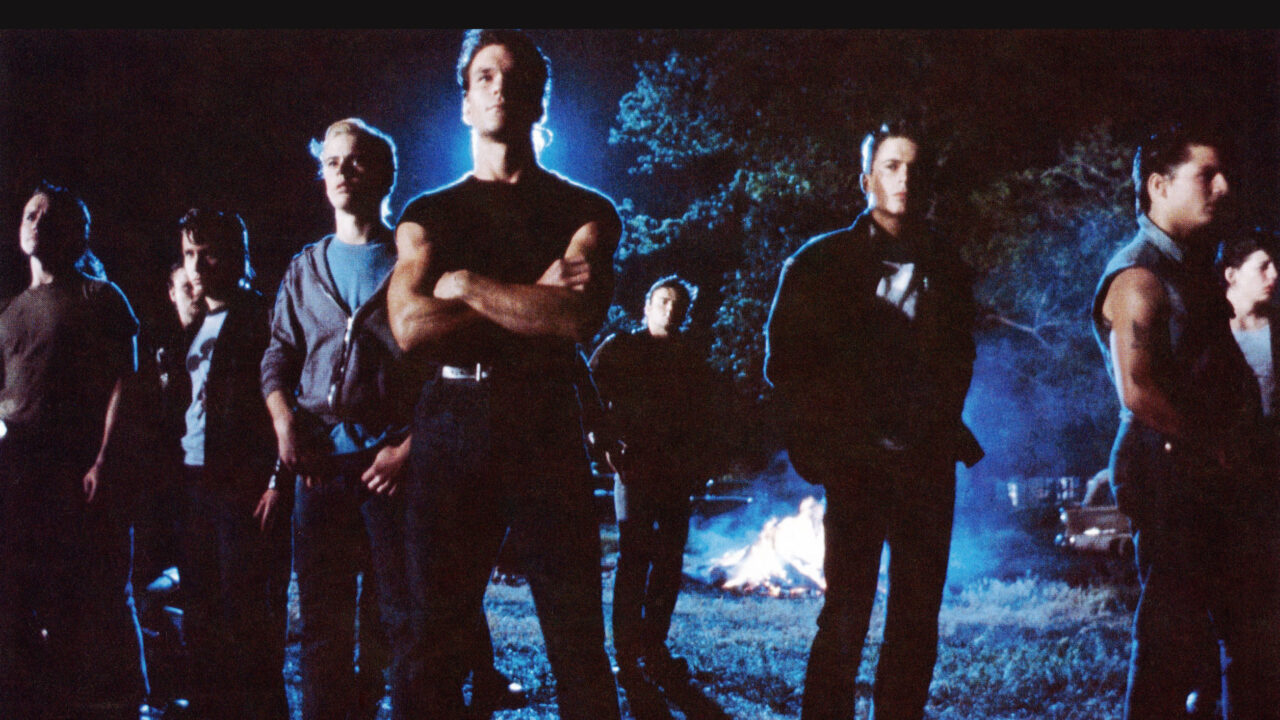The Outsiders is a classic novel by S.E. Hinton, published in 1967. Set in the 1960s, it dives into the lives of two rival groups: the Greasers and the Socs. The Greasers, often seen as the underdogs, face constant tension with the wealthier Socs. This story isn't just about gang rivalry; it's about friendship, loyalty, and the struggles of adolescence. Hinton's portrayal of the characters makes them relatable, engaging readers in their hopes and hardships. So, what leads to the tumultuous events that unfold in the story? Let’s dive into the infamous rumble!
Overview of the Rumble

The rumble is a pivotal event in The Outsiders that encapsulates the tensions between the Greasers and the Socs. This ultimate showdown occurs in the wake of escalating conflicts, fueled by deep-seated rivalries and misunderstandings. The Greasers, who are often viewed as tough yet vulnerable, find themselves in a desperate situation as they confront their wealthy adversaries.
The buildup to the rumble begins after a series of violent encounters. Tensions rise following the death of Johnny, a beloved Greaser, which ignites a fierce desire for revenge among his friends. The Greasers rally together, motivated not just by loyalty but also by a sense of justice for their fallen comrade. On the other hand, the Socs, who are accustomed to getting what they want, see the rumble as a way to assert their dominance.
As the day of the rumble approaches, both sides prepare themselves mentally and physically. The Greasers, led by characters like Dally, Ponyboy, and Two-Bit, are driven by camaraderie and the need to protect their own. They gather in a parking lot, fueling their spirits with camaraderie and shared determination. A strong sense of brotherhood is palpable, as they reminisce about past hardships and victories.
- The Greasers: They value loyalty, friendship, and resilience.
- The Socs: They often represent privilege, power, and a carefree attitude.
The night of the rumble arrives, and the atmosphere is charged with adrenaline. The Greasers and Socs face off in a vacant lot, with the stakes higher than ever. Fists fly, and chaos ensues as both groups unleash their frustrations. The rumble isn't just a physical confrontation; it symbolizes the deeper societal divides that keep these groups at odds.
In a dramatic turn of events, the Greasers ultimately emerge victorious, but the victory feels hollow. The rumble serves as a stark reminder that violence doesn't solve their problems. In the aftermath, characters like Ponyboy reflect on the futility of gang rivalry and the human cost of their actions. The rumble, while significant, leads to profound realizations about friendship and the nature of conflict.
Ultimately, the rumble in The Outsiders underscores the complexities of youth, identity, and the struggle for belonging. It’s a heart-wrenching moment that leaves readers questioning the true meaning of victory. As the dust settles, it's clear that the real battles often lie within—far deeper than any street fight.
Also Read This: How to Monetize Rumble and Maximize Your Earnings as a Content Creator
3. Key Characters Involved in the Rumble

In S.E. Hinton's classic novel The Outsiders, the rumble between the Greasers and the Socs is a pivotal moment that encapsulates the ongoing conflict between these two groups. Several key characters play crucial roles in this showdown, each representing different facets of youth culture and social struggle.
Ponyboy Curtis: As the protagonist and narrator, Ponyboy's perspective shapes our understanding of the conflict. His inner thoughts reveal the complexities of his character — he is both a fighter and a thinker. Throughout the rumble, he grapples with his identity and the societal pressures that come with being a Greaser.
Dally Winston: Dally, the tough and rebellious member of the Greasers, brings intensity to the rumble. His past experiences with violence make him a fierce fighter, and his loyalty to his friends is unwavering. Dally's reckless nature is evident during the rumble, as he often acts on impulse, driven by his desire to protect those he loves.
Johnny Cade: Although Johnny is not a fighter by nature, he plays a significant role in the events leading up to the rumble. His tragic background and sensitive personality highlight the consequences of gang violence. Johnny's actions during the rumble are influenced by his experiences, making him a poignant character in this narrative.
Bob Sheldon: As a key member of the Socs, Bob embodies the challenges faced by the Greasers. His aggression and need to assert dominance drive many of the conflicts in the story. Bob's character represents the darker side of privilege, making him a formidable opponent in the rumble.
Two-Bit Matthews: With his witty charm and loyalty, Two-Bit adds humor and heart to the Greasers. His bravado in the rumble reflects his deep-seated desire to protect his friends. Two-Bit's character serves as a reminder that camaraderie runs deep within the Greaser community, even in the face of violence.
These characters, along with others like Darry and Cherry Valance, create a rich tapestry of relationships and conflicts that fuel the rumble. Each character's motivations and backgrounds contribute to the explosive dynamics of this pivotal event, making it more than just a fight — it's a clash of identities and values.
Also Read This: How to Cash Out on Rumble and Withdraw Your Earnings
4. Detailed Analysis of the Rumble's Origins
The rumble in The Outsiders does not emerge in a vacuum; it is deeply rooted in the social tensions and historical context of the time. To understand its origins, we need to explore the dynamics between the Greasers and the Socs, as well as the broader societal issues at play.
Class Conflict: At its core, the rumble represents a struggle between two classes: the working-class Greasers and the affluent Socs. The Greasers, often marginalized and judged by their appearance and social status, feel the need to defend their territory and honor. In contrast, the Socs, who enjoy privilege and power, often view the Greasers as inferior. This class disparity fuels resentment and aggression, setting the stage for the rumble.
Cultural Differences: The cultural divide between the two groups is evident in their lifestyles, values, and behaviors. Greasers tend to embrace rebellion and toughness, while Socs often portray a façade of sophistication and carelessness. These differences lead to misunderstandings and conflicts, with the rumble serving as a cathartic expression of their frustrations.
Personal Grudges: Personal history also plays a significant role in the lead-up to the rumble. The murder of Bob Sheldon by Johnny Cade is a turning point that escalates tensions. This act of violence creates a cycle of retaliation, as both groups feel the need to respond to perceived slights and injustices. The rumble becomes not just a fight for territory but also a means of settling personal scores.
The Influence of Media and Society: The broader societal context, including media portrayals of gangs and youth violence, also contributes to the atmosphere surrounding the rumble. The sensationalism often leads to stereotypes and misconceptions, further polarizing the two groups. As a result, the rumble becomes a symbol of the larger societal issues at play, reflecting the struggles of adolescence and the quest for identity.
In conclusion, the origins of the rumble are multifaceted, combining class conflict, cultural differences, personal grudges, and societal influences. Understanding these factors not only enriches the narrative of The Outsiders but also invites readers to reflect on the nature of conflict and the complexities of youth identity in a divided world.
Also Read This: Can You Download Videos from Rumble? A Guide to Saving Content on Rumble
5. Who Initiated the Rumble and Why
The rumble in S.E. Hinton's "The Outsiders" is a pivotal moment that encapsulates the ongoing conflict between the Greasers and the Socs. But have you ever thought about who actually kicked it off? The initiation of the rumble is a combination of simmering tensions and the desire for respect and territory among the rival gangs.
The Greasers, led by characters like Ponyboy and Johnny, feel constantly oppressed by the Socs, who represent the affluent side of town. The decision to rumble is fueled by a need to assert their identity and stand up for themselves after the brutal attack on Johnny. When a Soc named Bob, who had previously harmed Johnny, is mentioned, it's clear that emotions are running high. This moment brings the Greasers together, not just for revenge, but for a sense of honor.
But who actually initiates the rumble? It’s Dallas "Dally" Winston who plays a significant role in rallying the Greasers. His fiery personality and rebellious spirit inspire the group to accept the challenge posed by the Socs. Dally’s motivation stems from a desire to protect his friends and reclaim their dignity, making the rumble more than just a fight—it's about standing up against the bullying that the Greasers face daily.
Moreover, the Socs, represented by characters like Randy and Bob, are not just fighting for territory; they are also trying to maintain their social dominance. They see the rumble as a way to remind the Greasers of their place in the societal hierarchy. Thus, the rumble becomes a representation of class struggle and the quest for equality, albeit through violence.
In summary, the initiation of the rumble is a collective response from both sides, sparked by personal vendettas and deeper social issues. It’s a clash of cultures that reflects the harsh realities of their environments, making it a crucial turning point in the story.
6. The Impact of the Rumble on the Story
The rumble is not just a climactic battle; it significantly alters the course of the narrative in "The Outsiders." After the dust settles, the consequences ripple through the lives of the characters, shaping their futures and perspectives. Let's dive into some of the most impactful outcomes:
- A Shift in Relationships: The rumble creates a deeper bond among the Greasers. It's a moment where they unite not only as a gang but as a family. The adrenaline and camaraderie experienced during the fight bring them closer together, reinforcing the theme of brotherhood.
- Consequences of Violence: The aftermath of the rumble serves as a stark reminder of the brutality that accompanies gang conflicts. Characters like Dally and Johnny face the harsh realities of their choices, leading to tragic outcomes that resonate throughout the story. Johnny's injuries, in particular, become a catalyst for change in Ponyboy.
- Reflection and Growth: Following the rumble, characters begin to reflect on their lives and the choices they've made. Ponyboy, in particular, starts to question the cycle of violence. This introspection is vital for his character development, guiding him toward a more hopeful outlook on life.
- The Theme of Socioeconomic Divide: The rumble highlights the stark contrasts between the Greasers and the Socs, emphasizing the socioeconomic divide that defines their lives. This conflict forces the characters—and readers—to confront the realities of class struggle and the need for empathy.
In essence, the rumble serves as a turning point that impacts not just the immediate characters but the overarching themes of the novel. It challenges them to reassess their identities, relationships, and the world around them. Through the dust and turmoil, Hinton masterfully illustrates that while violence may provide a fleeting sense of victory, it ultimately leads to deeper scars that require healing and understanding.
 admin
admin








